Lecture notes
- Relation definition
- Relation diagrams
- Reflective relations
- Symmetric relations
- Transitive relations
- Equivalence relations
- Anti-symmetry
- Partial order
- Total order
Relation definition
Definition
A relation R describes the relationship between different elements of a given set A: Formal: A relation R on a set A is a subset of the product set
Example: → if
Relation diagrams
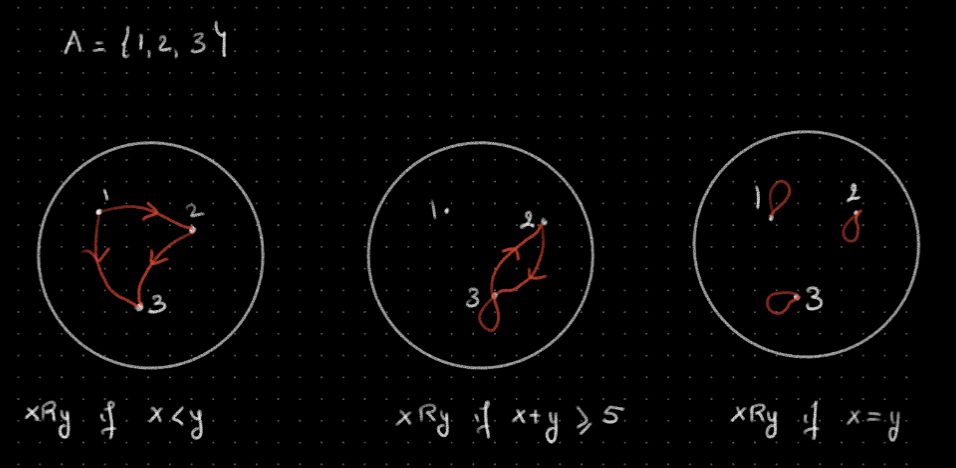
Reflective relations
Definition
A relation R on a set A is reflexive if every element of A is related to itself:
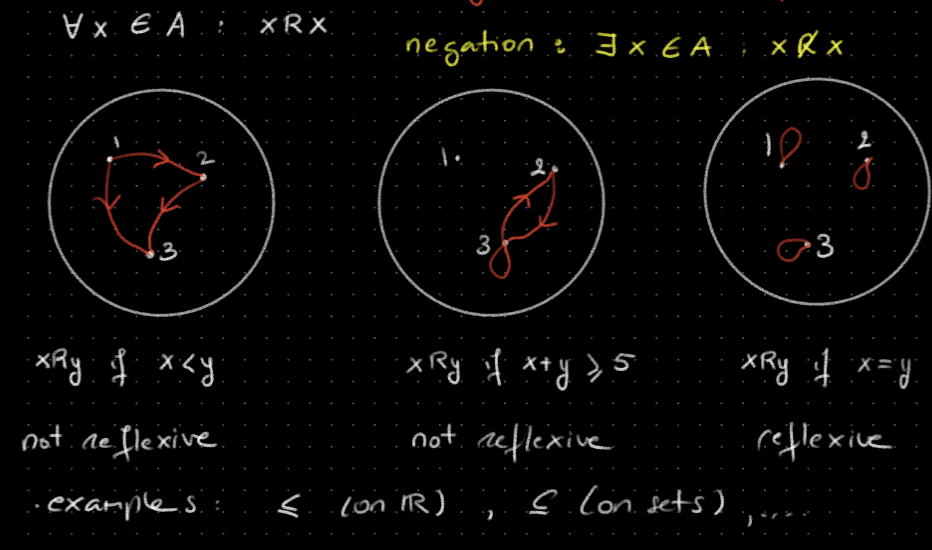
Symmetric relations
Definition
A relation R on a set A is symmetric if for all elements a,b in A:
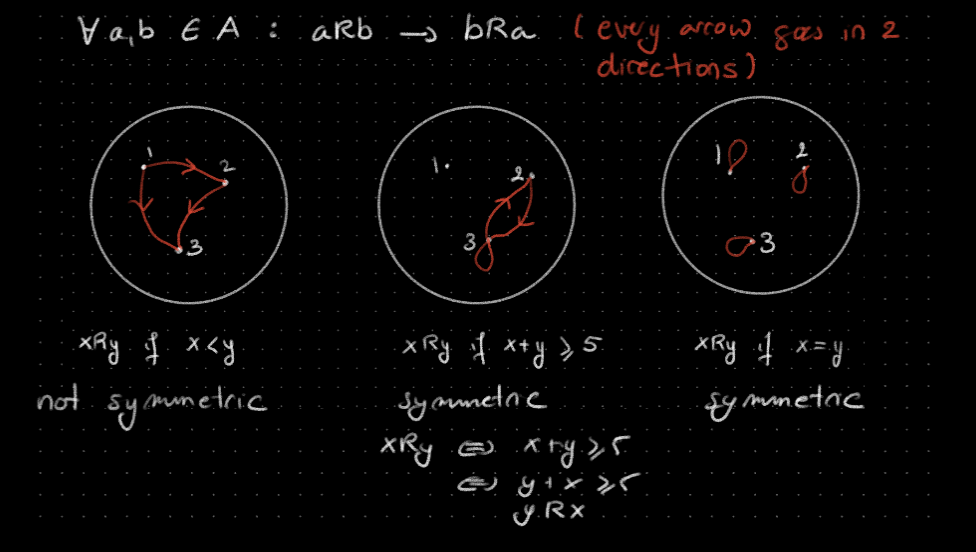
Transitive relations
Definition
A relation R on a set A is transitive if for all elements a,b,b in A:
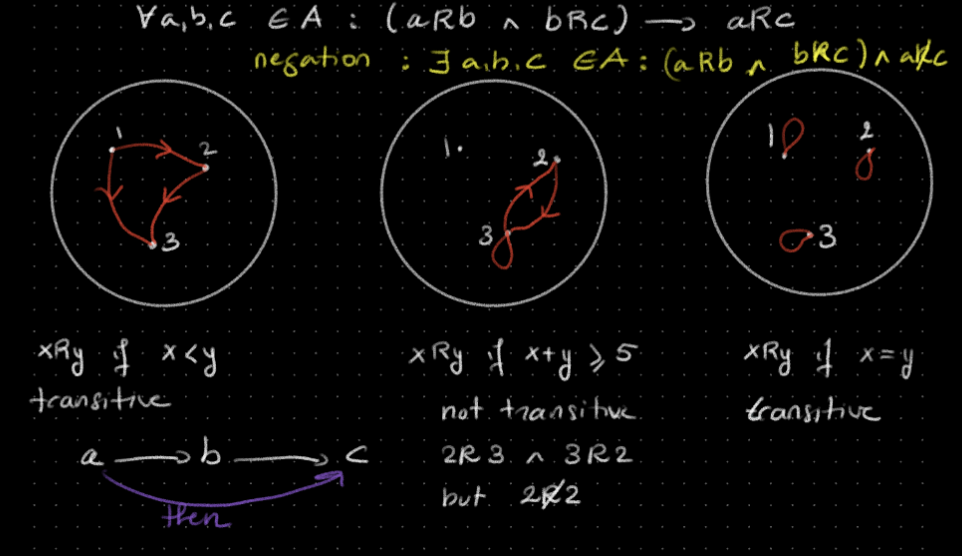
Equivalence relations
Definition
A relation R is called an equivalence relation if it is reflexive, symmetric and transitive
- An equivalence relation corresponds to a ==partition== of the set
- If you have a partition of a set, you get an equivalence relation
Example Let
- if is even
- Reflexive:
- Let is even → is verified ✅
- Symmetric:
- Assume then is even
- then is even (opposite of an even number is also even)
- so and the relation is symmetric ✅
- Transitive:
- Assume
- then is even and is even
- then is even (sum of even numbers is even)
- then is even → → Relation is transitive ✅
- R is reflexive, transitive and symmetric → it is an equivalence relation ✅
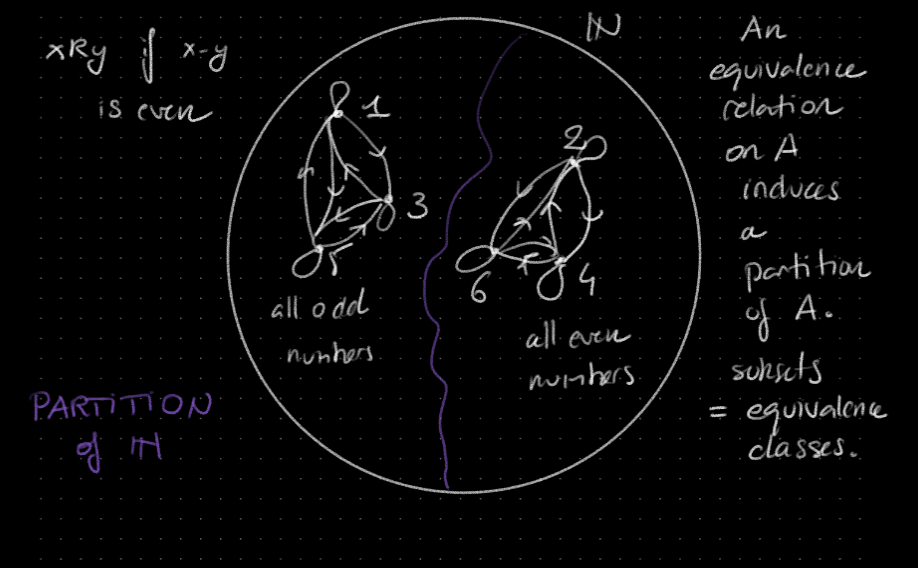
Example
Example Relation on
R^2if
Is the relation reflexive?
- if → this is trivially true → The relation is reflexive ✅
Is the relation symmetric?
- Let then
- then
- so → the relation is reflexive ✅
Is the relation transitive?
- Let
- then
- so
- so → the relation is transitive ✅
Anti-symmetry
Definition
It is not the negation of symmetry. A relation that cannot go in both directions
Examples
- if on → Anti-symmetric ✅
- if , on
- Not symmetric: then , since , but , since ❌
- Not anti-symmetric: , then since and since ❌
- if , on → Anti-symmetric ✅
- assume and
- then
- so
- assume and
Symmetry vs. Anti-symmetry
- Symmetry → all arrows go in 2 directions
- ==Anti-symmetry== → arrows between different elements cannot go in both directions
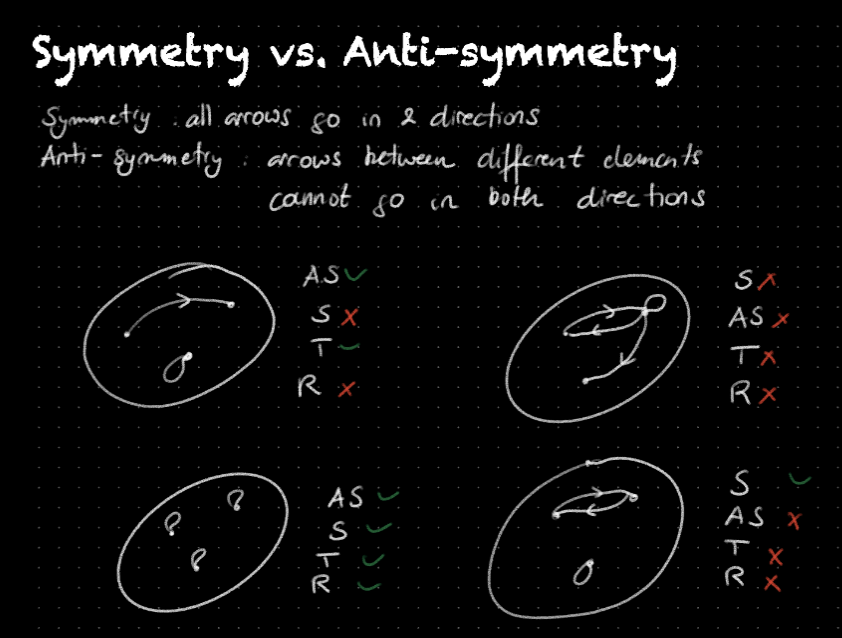
Partial order
Definition
A relation that is reflexive, transitive and anti-symmetric is called a partial order
Examples
-
Subset Relation →
- Reflexive → set A ✅
- Every set is a subset of …
- Anti-symmetry → if (set equality) ✅
- Transitive → if ✅
- Let
- since
- since
- Reflexive → set A ✅
-
if , on
- Reflexive → true (every number is smaller/equal than itself) ✅
- Anti-symmetry → if ✅
- Transitive → ✅
-
if is a multiple of y, on
- Reflexive → if x is a multiple of x → true for (every number is a multiple of itself) ✅
- Anti-symmetry →
- so
- so with
- then so ✅
- Transitive →
- ✅
Total order
Note
Not exam material
- What is the difference between a partial order and a total order?
- Partial order → Transitive, Anti-symmetric, reflexive
- Total order → Partial order +
Key takeaways
- Do you know what anti-symmetry is?
- Do you understand that symmetry and anti-symmetry are NOT opposites?
- Do you know when a relation is a partial order. (and how to prove this)?